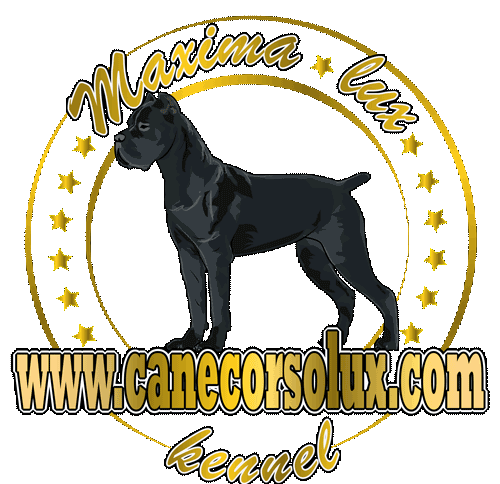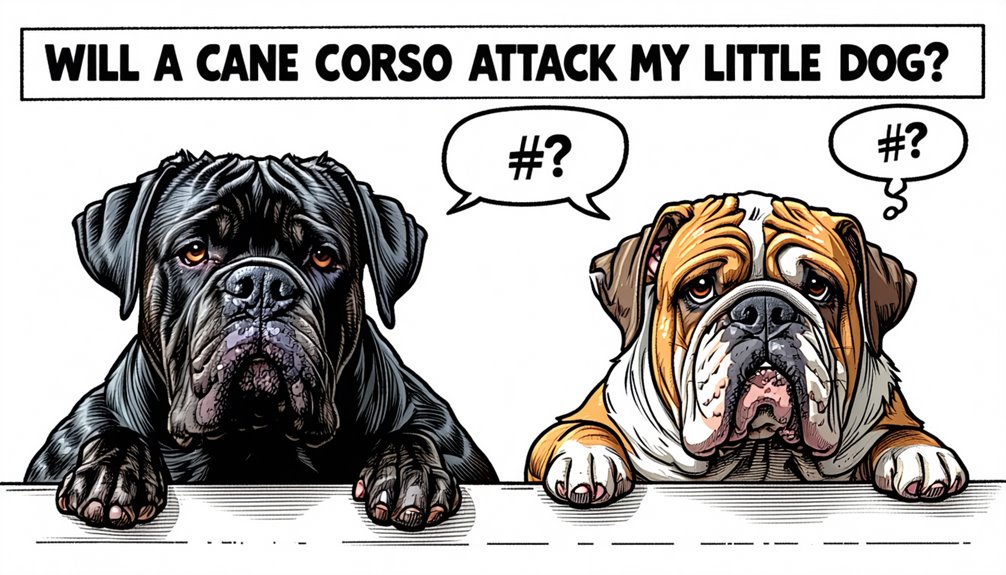Cane Corsos are not well-suited for warm weather due to their physiological challenges with heat regulation. Their muscular build and thin coat create significant thermal management risks, making them highly susceptible to heat stress and potential heat-related health complications. Their large body mass and limited cooling mechanisms increase the likelihood of rapid heat exhaustion, with risks including dehydration, cardiovascular strain, and potential heat stroke. Coat color variations—particularly black—further amplify heat sensitivity. Owners must implement vigilant cooling strategies, monitor for early heat stress signs like excessive panting, and prioritize hydration and shade. Curious about thorough heat management techniques that could protect your Cane Corso?
Key Takeaways
- Cane Corsos are not well-suited for warm weather due to their muscular build, limited heat regulation mechanisms, and high physiological susceptibility to heat stress.
- Black-coated Cane Corsos experience even higher heat sensitivity, making them particularly vulnerable to rapid overheating and potential heat-related health complications.
- The breed's thick muscle mass and limited cooling capabilities increase their risk of heat exhaustion and potential heat stroke in high-temperature environments.
- Preventive strategies like early morning/evening exercise, constant hydration, shade access, and cooling technologies are essential for managing their thermal comfort.
- Without careful management and proactive cooling interventions, Cane Corsos can quickly develop severe heat-related health issues, making them fundamentally challenging in warm climates.
Understanding Cane Corso Body Temperature
Thermodynamics plays an important role in understanding how Cane Corsos regulate their body temperature. As a large dog breed, the Cane Corso's physiological mechanisms for heat management are complex and influenced by multiple factors. Their thin coat and muscular build create unique challenges in temperature regulation, particularly in warm climates.
The breed's body temperature management depends on several vital health conditions and environmental interactions. A Cane Corso's ability to dissipate heat is directly related to its coat density, muscle mass, and individual metabolic efficiency. While their original breeding characteristics suggest adaptation to warmer environments, individual variations can considerably impact heat tolerance. Additionally, Cane Corsos' exercise needs can further influence their overall heat management, making it essential for owners to monitor their activity levels during hot weather.
Physiological responses like panting, vasodilation, and sweat gland activation become essential mechanisms for maintaining ideal body temperature. Large dogs like the Cane Corso face greater thermal challenges due to their substantial body mass, which retains heat more efficiently than smaller breeds. Their metabolic rate and muscular composition further influence their heat regulation capabilities.
Understanding these intricate thermal dynamics helps owners provide appropriate care and environmental management. By recognizing the breed's specific physiological characteristics, we can better support their comfort and prevent potential heat-related health complications.
Heat Tolerance and Breed Characteristics
Building on our understanding of body temperature regulation, the Cane Corso's heat tolerance emerges as a nuanced aspect of breed characteristics. The breed's coat characteristics play a critical role in their thermal management, with individual variations considerably impacting their comfort in warm environments.
| Coat Color | Heat Sensitivity | Adaptation Potential |
|---|---|---|
| Black | High | Moderate |
| Fawn | Moderate | High |
| Gray | Low | Low |
| Brindle | Moderate | Moderate |
While Cane Corsos possess a thin coat typically suited for warmer climates, their heat tolerance isn't uniform. Some dogs demonstrate remarkable acclimatization, whereas others quickly exhibit signs of heat stress. Their susceptibility to temperature variations means owners must remain vigilant, recognizing early indicators like rapid breathing, excessive salivation, and unusual lethargy. Additionally, hip dysplasia can exacerbate discomfort in warmer conditions, making it crucial to manage their environment effectively.
The breed's genetic predisposition and individual physiological factors contribute to their heat response. Remarkably, working-line Cane Corsos might exhibit different thermal resilience compared to companion dogs. Understanding these nuanced characteristics allows owners to provide ideal environmental management, ensuring their Cane Corso's health and comfort during temperature fluctuations.
Summer Risks for Large Breeds
Despite the robust physique of large dog breeds like the Cane Corsos, summer temperatures pose significant physiological challenges that can rapidly escalate from mild discomfort to life-threatening conditions.
As a large dog owner, understanding these summer risks is critical for preventing potentially dangerous health scenarios.
Cane Corsos, with their muscular build and short coats, are particularly vulnerable to heat-related complications. Their inability to efficiently regulate body temperature makes them susceptible to rapid physiological stress during high temperatures.
Key summer risks for these large dogs include:
- Rapid onset of heat exhaustion due to limited cooling mechanisms
- Potential for severe dehydration within minutes of outdoor exposure
- Compromised cardiovascular and respiratory function under thermal stress
- Increased likelihood of heat stroke without proper preventative measures
Scientific research demonstrates that large breeds like Cane Corsos experience heightened metabolic challenges during summer months.
Their substantial muscle mass generates significant internal heat, while their limited surface area-to-body mass ratio restricts effective thermal dissipation.
Proactive management—including strategic exercise scheduling, constant hydration, and vigilant monitoring—becomes paramount in mitigating these inherent summer risks for Cane Corsos.
Signs of Canine Heat Stress
The silent harbinger of canine distress, heat stress manifests through a constellation of physiological and behavioral signals that demand immediate recognition. In Cane Corsos, these signs reveal the dog's critical struggle with rising temperatures. As an owner, I've learned to vigilantly monitor key indicators that signal potential heat-related danger.
| Early Signs | Advanced Symptoms |
|---|---|
| Rapid breathing | Vomiting |
| Excessive salivation | Collapse |
| Increased lethargy | Convulsions |
| Reduced activity | Neurological impairment |
Rapid or troubled breathing represents the first warning of heat stress in these powerful dogs. When a Cane Corso begins exhibiting excessive salivation, it's a critical moment requiring immediate cooling interventions. Lethargy and weakness cannot be dismissed as mere fatigue; they're potential markers of advancing heat exhaustion.
More severe manifestations like vomiting or diarrhea demand urgent attention. These symptoms suggest the dog's thermoregulatory system is failing, creating significant health risks. Ultimately, heat stress can progress to life-threatening conditions such as collapse or convulsions, necessitating immediate veterinary care.
Understanding these signs empowers responsible Cane Corso owners to proactively protect their companions from dangerous heat-related complications.
Hydration and Cooling Strategies
Recognizing the potential severity of heat stress in Cane Corsos demands a proactive approach to hydration and cooling strategies. As a responsible owner, I understand that maintaining ideal body temperature is critical for my dog's health and well-being during warm weather conditions.
Key cooling techniques include:
- Providing constant access to fresh, cool water to prevent dehydration
- Creating shaded outdoor spaces that shield the dog from direct sunlight
- Using specialized cooling mats or portable pools to reduce body temperature
- Scheduling exercise during cooler morning or evening hours
The scientific approach to managing heat stress involves vigilant monitoring and strategic interventions. Hydration plays a paramount role in temperature regulation, with water serving as the primary mechanism for cooling physiological processes.
By implementing these evidence-based strategies, I can effectively mitigate the risk of heat-related complications in my Cane Corso.
Careful observation of potential overheating signs—such as excessive panting, lethargy, or altered behavior—allows for immediate corrective action.
These proactive measures not only protect my dog's health but also demonstrate a commitment to responsible pet ownership in challenging environmental conditions.
Exercise Modifications During Hot Weather
Three primary considerations shape exercise modifications for Cane Corsos during hot weather: intensity, duration, and timing. As a responsible Cane Corso owner, I understand that our robust breed requires strategic adjustments to maintain their physical health and prevent heat-related complications.
During high-temperature periods, I recommend reducing exercise intensity and duration. Shorter, less demanding activities help prevent overheating and potential heat stress. By scheduling walks and play sessions during cooler morning or evening hours, I can guarantee my Cane Corso remains active while minimizing thermal strain.
Monitoring my dog's physiological responses becomes critical during these modifications. I watch for signs of heat exhaustion, such as excessive panting or unusual lethargy, which signal the need to immediately reduce activity and provide cooling interventions.
Incorporating cooling strategies like access to shade, fresh water, and post-exercise cooling mats can greatly mitigate heat-related risks.
These exercise modifications aren't about limiting my Cane Corso's activity but strategically managing their physical engagement during challenging weather conditions. By understanding and implementing these evidence-based approaches, I can maintain my dog's fitness and well-being while prioritizing their safety in hot environments.
Indoor Comfort for Your Dog
Every Cane Corso owner must prioritize creating an ideal indoor environment during warm weather to mitigate heat-related health risks. Understanding the breed's sensitivity to temperature is vital for maintaining their physiological well-being and preventing potential heat stress.
Key elements of indoor comfort for a Cane Corso in warm weather include:
- Strategically positioning cooling mats in low-traffic areas
- Ensuring consistent air conditioning at moderate temperatures
- Providing multiple fresh water stations throughout living spaces
- Creating dedicated cool zones with good air circulation
The breed's short, thin coat makes them particularly vulnerable to temperature fluctuations, necessitating proactive temperature management. By maintaining an indoor environment between 68-72 degrees Fahrenheit, owners can greatly reduce the risk of overheating and associated health complications.
Advanced cooling strategies involve monitoring humidity levels, utilizing fans for additional air movement, and recognizing early signs of heat stress.
A scientifically informed approach to indoor comfort involves understanding your Cane Corso's unique thermoregulatory needs and implementing targeted interventions that support their physiological stability during warm weather conditions.
Consistent environmental management is key to ensuring your Cane Corso remains comfortable, healthy, and resilient in challenging thermal conditions.
Emergency Heat Precautions
In the vital arena of canine heat management, emergency heat precautions for Cane Corsos represent a paramount consideration for responsible pet owners. As a Cane Corso guardian, I recognize the breed's heightened vulnerability to heat-related issues, which demands vigilant monitoring and proactive intervention.
Immediate recognition of heat distress symptoms is essential. When a Cane Corso exhibits excessive panting, lethargy, or labored breathing, swift action becomes imperative. These signs can rapidly escalate to life-threatening heatstroke, necessitating rapid cooling and potential veterinary intervention.
The most important precaution involves preventing exposure to extreme temperatures. Never leaving your Cane Corso in a parked vehicle, even momentarily, is non-negotiable. Temperatures inside enclosed spaces can rise exponentially within minutes, creating a potentially fatal environment.
Strategic management includes providing constant access to fresh water and shaded areas. When temperatures surge, limiting outdoor activity to cooler morning or evening hours becomes essential.
By implementing these targeted heat precautions, Cane Corso owners can mitigate risks and guarantee their dog's physiological safety during warm weather conditions.
Vigilance, preparation, and immediate response are the cornerstones of protecting your Cane Corso from heat-related emergencies.
Veterinary Recommendations for Summer Care
Against the backdrop of rising summer temperatures, veterinary professionals emphasize critical care strategies for Cane Corsos, a breed particularly susceptible to heat-related health challenges.
As a large-size dog breed with specific physiological characteristics, Cane Corsos require meticulous summer management to prevent common health complications associated with heat stress.
Key veterinary recommendations include:
- Limit outdoor activities during peak heat hours, focusing on early morning or late evening exercise sessions
- Guarantee constant access to fresh, cool water and multiple shaded resting areas
- Monitor body temperature and watch for early signs of potential overheating, such as excessive panting or unusual lethargy
- Consult with a professional about specialized cooling strategies tailored to the breed's unique physical needs
Veterinarians stress the importance of proactive summer care to maintain peak health.
By implementing targeted cooling techniques and modifying exercise routines, owners can greatly reduce the risk of heat-related health issues.
The breed's muscular build and dense coat make them more vulnerable to temperature fluctuations, necessitating a strategic approach to summer management.
Careful observation, preventative measures, and professional guidance are essential for safeguarding a Cane Corso's well-being during warm weather conditions.
Long-Term Heat Management Techniques
Building upon veterinary recommendations for summer care, long-term heat management for Cane Corsos requires a detailed, strategic approach that addresses their unique physiological vulnerabilities. The breed's thin coat suggests careful temperature regulation is vital for their well-being.
| Heat Management | Exercise Strategy | Hydration Approach |
|---|---|---|
| Shade Access | Morning/Evening Walks | Constant Water Availability |
| Cooling Mats | Reduced Intensity | Regular Hydration Checks |
| Temperature Monitoring | Indoor Training | Electrolyte Supplementation |
| Gradual Acclimatization | Shorter Duration | Moisture-Rich Diet |
Effective heat management involves multiple interconnected strategies. I recommend developing extensive exercise routines that minimize heat exposure by scheduling activities during cooler periods. Providing consistent access to shaded areas and fresh water becomes essential in maintaining ideal body temperature.
Monitoring your Cane Corso's physiological responses is important. Watch for signs of heat stress like excessive panting, lethargy, or decreased activity levels. Their adaptable coat can develop an undercoat in colder conditions, but proactive temperature management remains vital.
Utilizing cooling technologies such as specialized mats and understanding your dog's individual heat tolerance will guarantee long-term comfort and health. Strategic intervention prevents potential heat-related complications and supports your Cane Corso's overall well-being.
Conclusion
As a Cane Corso owner, I've learned that heat management requires vigilance. While these muscular dogs aren't naturally suited to extreme temperatures, strategic care can mitigate risks. Understanding breed-specific thermal regulation, providing hydration, avoiding peak sun hours, and recognizing early heat stress signs are critical. Your proactive approach can guarantee your Cane Corso remains healthy and comfortable during challenging summer conditions.






